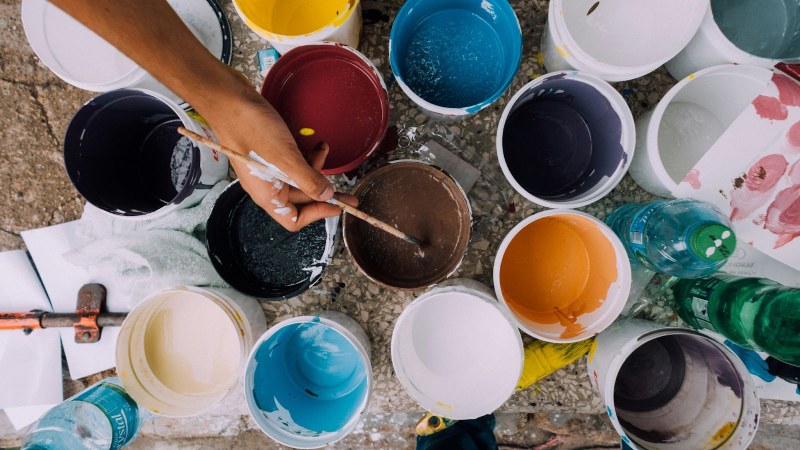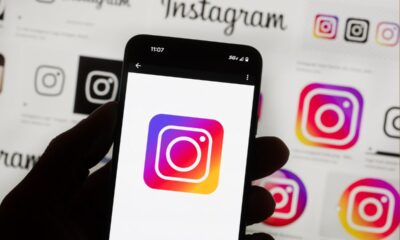Entertainment
Amol Sahasrabudhe: How the Performing Arts Are Evolving in the Digital Age

The performing arts are undergoing a remarkable transformation in the digital age, driven by advancements in technology that are reshaping how art is created, shared, and experienced.
As artists and organizations navigate this evolving landscape, they are finding ways to balance tradition with innovation while exploring the immense potential of emerging technologies like virtual reality and artificial intelligence.
Below, Amol Sahasrabudhe looks at how the performing arts continue to captivate and inspire global audiences in once unimaginable ways.
Technology’s Impact on the Performing Arts
The performing arts have experienced a profound transformation as technology continues to evolve, reshaping how performances are created, shared, and experienced. Streaming platforms like YouTube and Netflix have enabled audiences to access performances from anywhere in the world, breaking down barriers of geography and physical space.
This shift has allowed artists to reach global audiences that were previously unattainable, creating new opportunities for cultural exchange and artistic collaboration.
Beyond streaming, technological advancements such as virtual reality (VR) and augmented reality (AR) are redefining the boundaries of creativity in the performing arts. These tools provide immersive experiences that blur the physical and digital lines, transporting audiences into new realms.
Artificial intelligence (AI) is also playing a growing role, from choreographing movements to composing music, expanding the creative possibilities for artists while challenging traditional notions of authorship.
Virtual Performances and Digital Storytelling
The rise of virtual performances has revolutionized how audiences experience the performing arts. Platforms like TikTok and YouTube have become digital stages where artists can showcase their work to millions of viewers, transcending the limitations of traditional venues.
Streaming has not only increased accessibility but also enabled performers to experiment with new formats, such as interactive digital theater and on-demand productions. This evolution has allowed storytelling to flourish uniquely, with narratives adapted to suit the digital medium and its global reach.
Virtual reality and augmented reality have further expanded the possibilities of storytelling. Through these immersive technologies, audiences are no longer passive observers but active participants in the performance.
A ballet, for instance, can now transport viewers to fantastical landscapes, while a play can evolve into a multisensory journey that feels deeply personal. Such innovations are reshaping how stories are told and consumed, introducing a level of engagement that was once unimaginable.
Social Media as a Stage and Marketing Tool
Social media has become an indispensable space for performers and organizations to connect with audiences and promote their craft.
Platforms like Instagram and Facebook enable artists to share behind-the-scenes moments, announce upcoming shows, and interact directly with their followers. This creates a sense of intimacy that strengthens the artist-audience relationship, fostering loyalty and excitement in ways that traditional outreach methods could not achieve.
Beyond engagement, social media influences trends within the performing arts. Viral dance challenges or clips of theatrical performances can quickly gain traction, introducing new audiences to art forms they might not have encountered otherwise. TikTok, in particular, has emerged as a powerful tool for younger artists, allowing them to build careers and attract attention through creative, bite-sized performances.
Expanding Access and Inclusivity
Digital tools have opened new doors for inclusivity in the performing arts, bridging gaps that once limited participation and accessibility. Online streaming with features like captioning and multilingual options has accommodated performances for audiences with disabilities or language barriers. Free virtual events and pay-what-you-can models have further democratized access, ensuring that art is no longer confined to those who can afford premium tickets or travel to significant cultural hubs.
At the same time, these advancements highlight the persistent issue of the digital divide. While many have embraced the convenience of online performances, others still need access to reliable internet or modern technology.
Artists and organizations are increasingly mindful of these disparities, striving to balance innovation with efforts to reach underserved communities. Initiatives such as offline recordings distributed to rural areas or partnerships with public institutions aim to ensure that inclusion remains at the forefront of this digital transformation.
Balancing Innovation with Tradition
The performing arts stand at a crossroads, where the push for innovation must coexist with preserving tradition. While digital tools have introduced exciting possibilities, they also raise concerns about the erosion of live, in-person experiences.
Many performers and audiences value a shared physical space’s authenticity and emotional depth, something that even the most immersive technology struggles to replicate. This tension has sparked a broader conversation about honoring artistic forms’ roots while embracing the future.
Hybrid performances have emerged as a creative solution, blending live and digital elements to cater to evolving audience preferences. A symphony might combine a traditional orchestra with a backdrop of AI-generated visuals, or a theater production could incorporate live-streamed interactions with remote viewers. These approaches aim to respect the soul of the art form while adapting to the changing landscape, offering a middle ground that satisfies purists and tech enthusiasts alike.
Future Directions for Performing Arts in the Digital Age
The future of the performing arts is poised to be shaped by technologies already redefining other creative industries. Virtual reality theaters, AI-assisted choreography, and holographic performances are no longer just speculative ideas but emerging realities. These innovations can elevate audience experiences to unprecedented levels, offering immersive, personalized, and globalized access to art. A person might soon attend a live concert via a VR headset or collaborate in real-time with artists from different continents through digital platforms.
As boundaries between physical and digital blur, questions about sustainability and ethics will likely take center stage. Artists and organizations must consider integrating technology responsibly, ensuring that advancements do not overshadow the personal and emotional connections that make the performing arts so impactful. The challenge will be to harness these tools in ways that amplify rather than dilute the artistry, creating a future where tradition and innovation are not at odds but in harmony.
While the digital age has already transformed much of the performing arts landscape, the journey promises even greater possibilities. As artists continue to adapt and experiment, their creativity will undoubtedly lead to groundbreaking ways of storytelling and audience engagement, ensuring the performing arts remain as dynamic and relevant as ever.
-

 Startup2 weeks ago
Startup2 weeks agoSmall Business Month Encourages Entrepreneurs to Take Stock and Scale Up with Actionable Marketing Strategies
-

 Business4 days ago
Business4 days agoFrom Passion to Powerhouse: How Lash ShayVu Is Redefining Beauty, One Lash at a Time
-

 Startup6 days ago
Startup6 days agoHow B2B Marketing Can Drive Business Growth in Today’s Competitive Market
-

 Health4 weeks ago
Health4 weeks agoSt. John’s Community Health Examines Innovations in Pharmacy Access
-

 Business3 weeks ago
Business3 weeks agoSoheil Moarefi Bridges Iran and Africa in a New Era of Trade and Innovation
-

 Music3 weeks ago
Music3 weeks agoA Country Star on the Rise: Todd Barrow Blazes a New Trail with “Ain’t Lookin’ Back Now”
-

 Apps3 weeks ago
Apps3 weeks agoInstagram Launches ‘Blend’ Feature to Share Personalized Reels with Friends: What It Is, How to Use and Activate New Feature
-

 Startup4 weeks ago
Startup4 weeks agoCost-Saving Strategies Every Small Business Owner Should Know to Boost Efficiency



















